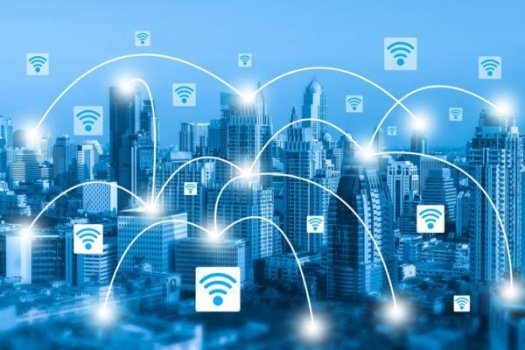K
Kathleen Martin
Guest
Smart cities are key to improving quality of life of citizens and driving down carbon emissions. And monitoring power, air and water quality and transport requires reliable low-cost sensors in a rugged, cost-effective network.
Public utility operators were early adopters of Internet of Things (IoT) technology for cities that need to increase sustainability as well as make quality of life improvements for citizens and visitors. One of the biggest opportunities for the IoT sensor networks is to improve efficiencies and better manage natural resources.
Knowing how weather-related conditions such as rain and water levels are changing in real-time can help prepare for and react to potential dangers faster to better protect infrastructure and the community. Connected sensors enable this data capture, advanced analytics uncover key insights, and long-range connectivity is important as sensors are in outdoor and harsh environments.
Low power sensors and networks
Low power wireless sensors powered by batteries or solar cells can provide key data for such IoT networks, whether for water supply, electricity, smart buildings or logistics. Battery-backed sensors can be placed in many locations to provide as much data as possible and LPWANs provide a long range link with a battery lifetime of decades, minimising the cost of rolling out a monitoring network by avoiding the need for regular battery replacement cycles.
All of this data can be ingested into machine learning databases that can identify patterns, highlighting equipment that may be about to fail, and allowing resources to be provided more accurately. This is an essential element in optimising the use of increasingly scarce resources and improving the quality of life of citizens in a city.
In fact, 84 per cent of IoT deployments are currently addressing the Sustainable Development Goal (SDG) targets defined by the United Nations according to a joint World Economic Forum and IoT Analytics report.
These sensor networks provide this actionable data across many parts of the smart city in several different ways. The early implementations have seen sub-GHz networks used for smart street lighting, air quality sensors and traffic monitoring.
The range and robust design of the network means only a few gateways are needed to cover a city, and these can be rolled out quickly and easily in convenient locations by city governments, LPWAN network operators or even by citizens with a broadband connection and their own gateway.
Public utility operators were early adopters of Internet of Things (IoT) technology for cities that need to increase sustainability as well as make quality of life improvements for citizens and visitors. One of the biggest opportunities for the IoT sensor networks is to improve efficiencies and better manage natural resources.
Knowing how weather-related conditions such as rain and water levels are changing in real-time can help prepare for and react to potential dangers faster to better protect infrastructure and the community. Connected sensors enable this data capture, advanced analytics uncover key insights, and long-range connectivity is important as sensors are in outdoor and harsh environments.
Low power sensors and networks
Low power wireless sensors powered by batteries or solar cells can provide key data for such IoT networks, whether for water supply, electricity, smart buildings or logistics. Battery-backed sensors can be placed in many locations to provide as much data as possible and LPWANs provide a long range link with a battery lifetime of decades, minimising the cost of rolling out a monitoring network by avoiding the need for regular battery replacement cycles.
All of this data can be ingested into machine learning databases that can identify patterns, highlighting equipment that may be about to fail, and allowing resources to be provided more accurately. This is an essential element in optimising the use of increasingly scarce resources and improving the quality of life of citizens in a city.
In fact, 84 per cent of IoT deployments are currently addressing the Sustainable Development Goal (SDG) targets defined by the United Nations according to a joint World Economic Forum and IoT Analytics report.
These sensor networks provide this actionable data across many parts of the smart city in several different ways. The early implementations have seen sub-GHz networks used for smart street lighting, air quality sensors and traffic monitoring.
The long range and low power of the LPWAN network allows sensors to be placed where they make the most sense to provide the necessary data, rather than placed depending on the available power or connectivity. These sensors link to gateways that feed the data back into enterprise software systems for real-time monitoring.All of this data can be ingested into machine learning databases that can identify patterns, highlighting equipment that may be about to fail, and allowing resources to be provided more accurately
The range and robust design of the network means only a few gateways are needed to cover a city, and these can be rolled out quickly and easily in convenient locations by city governments, LPWAN network operators or even by citizens with a broadband connection and their own gateway.

